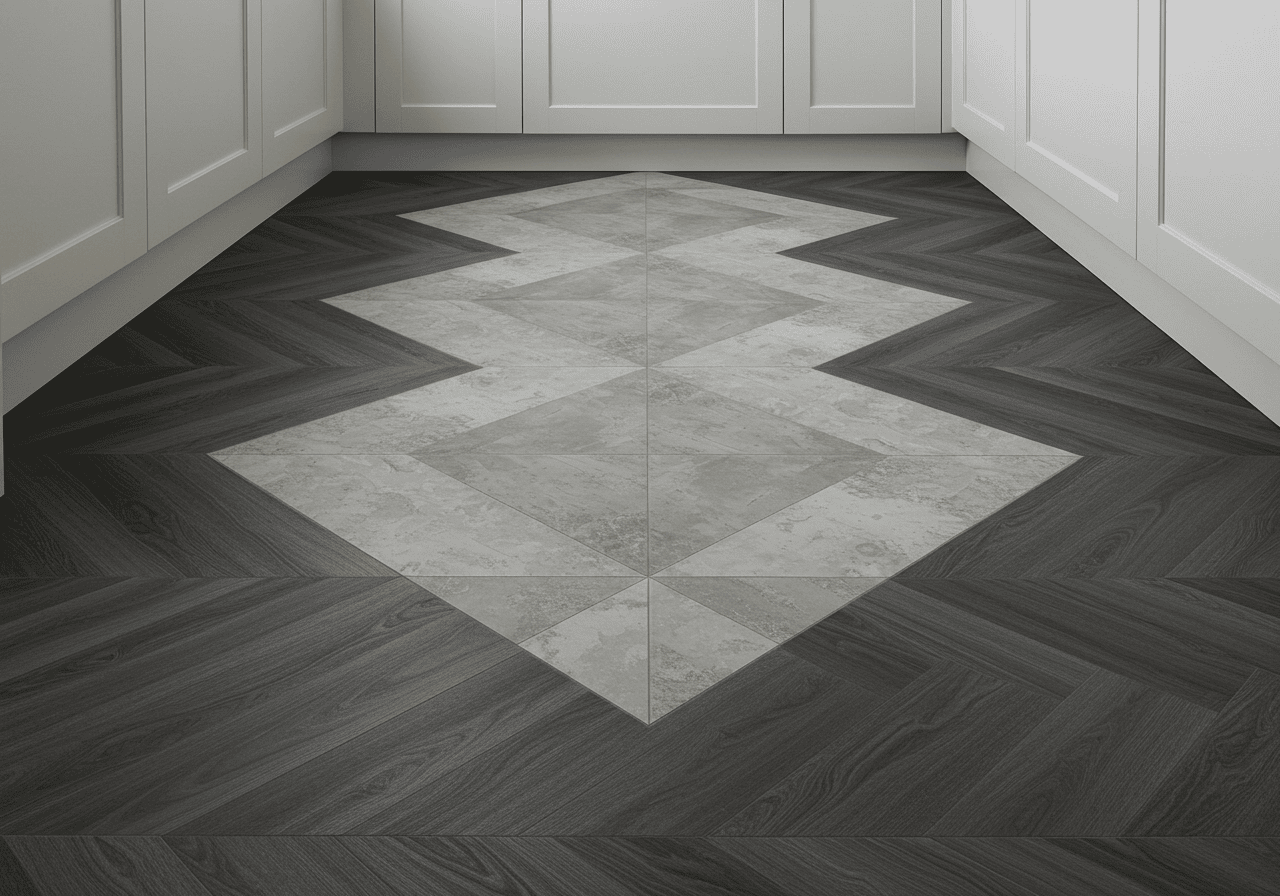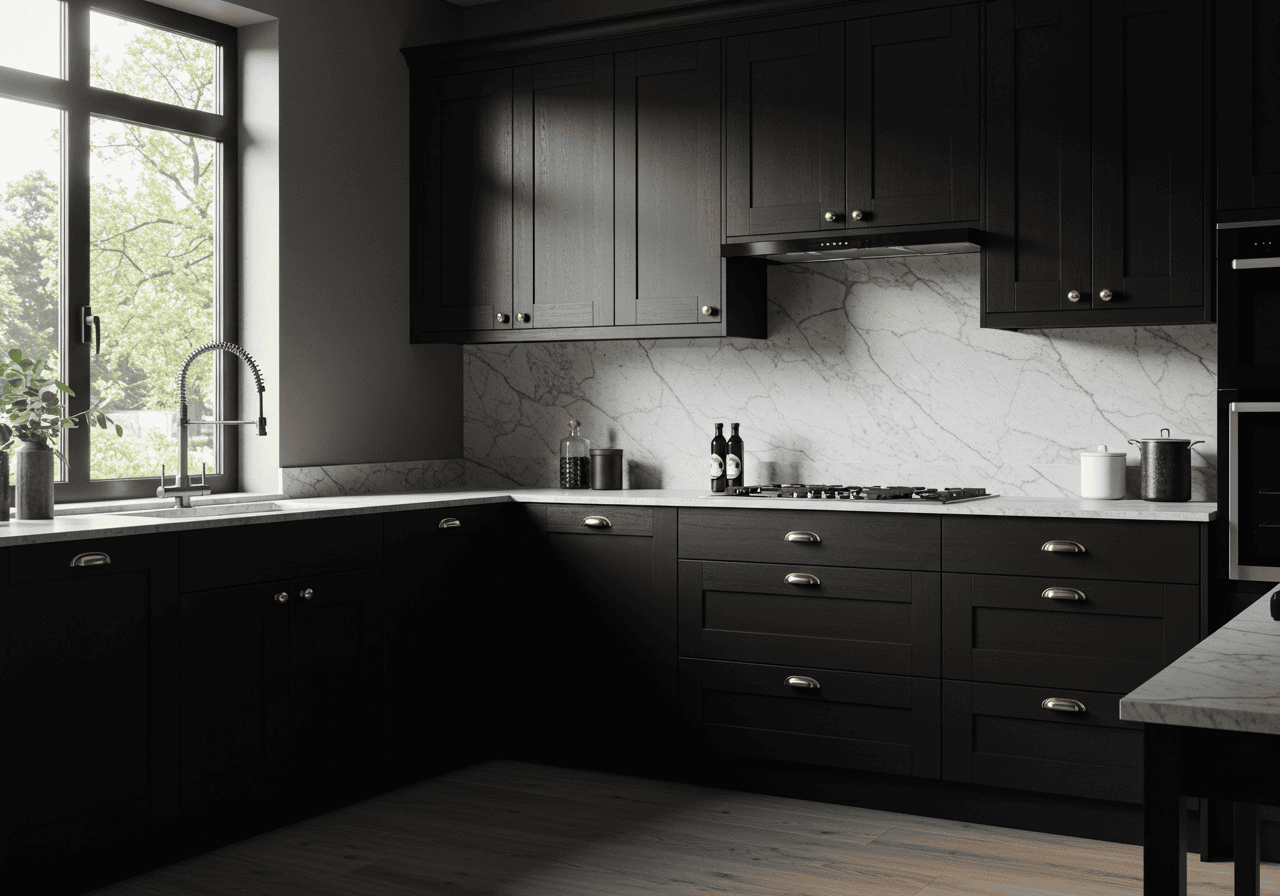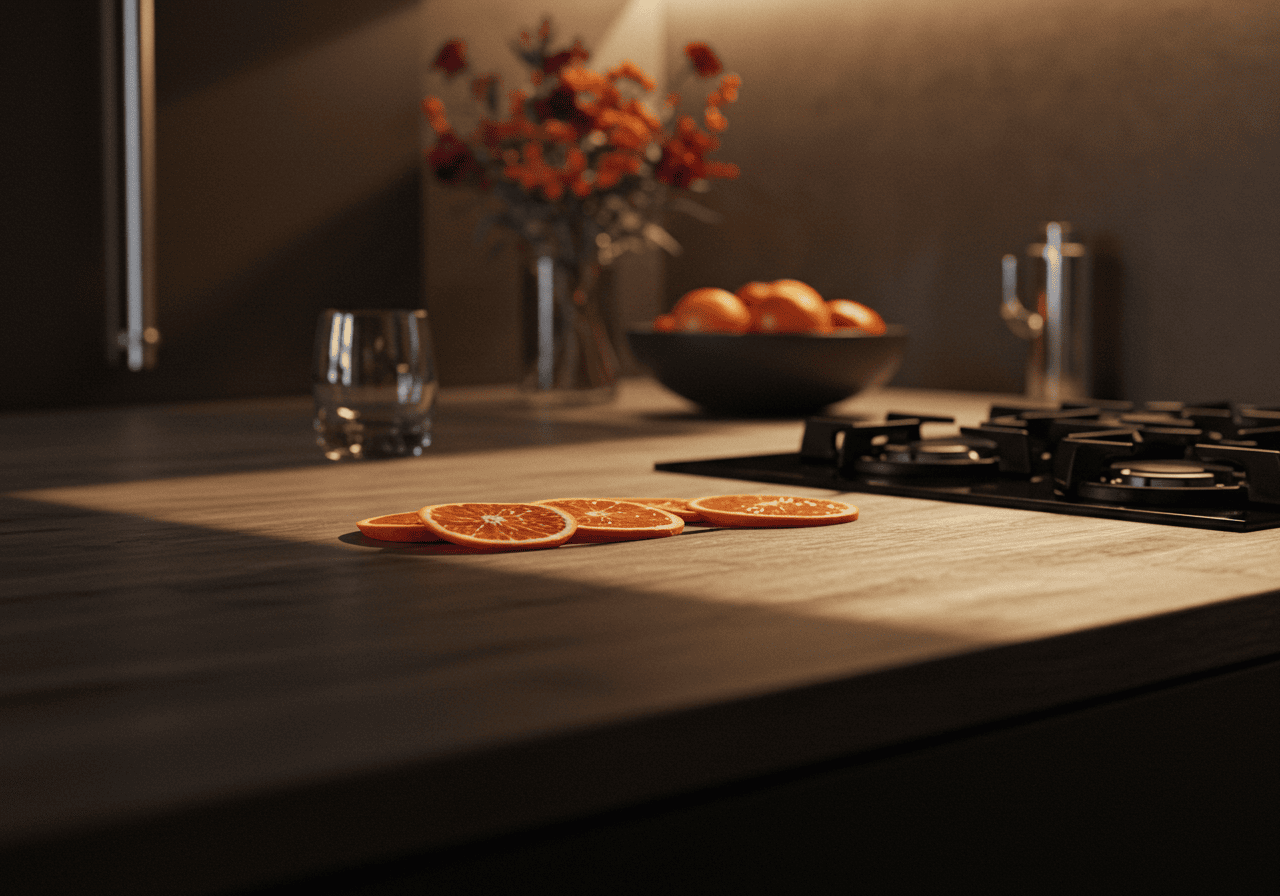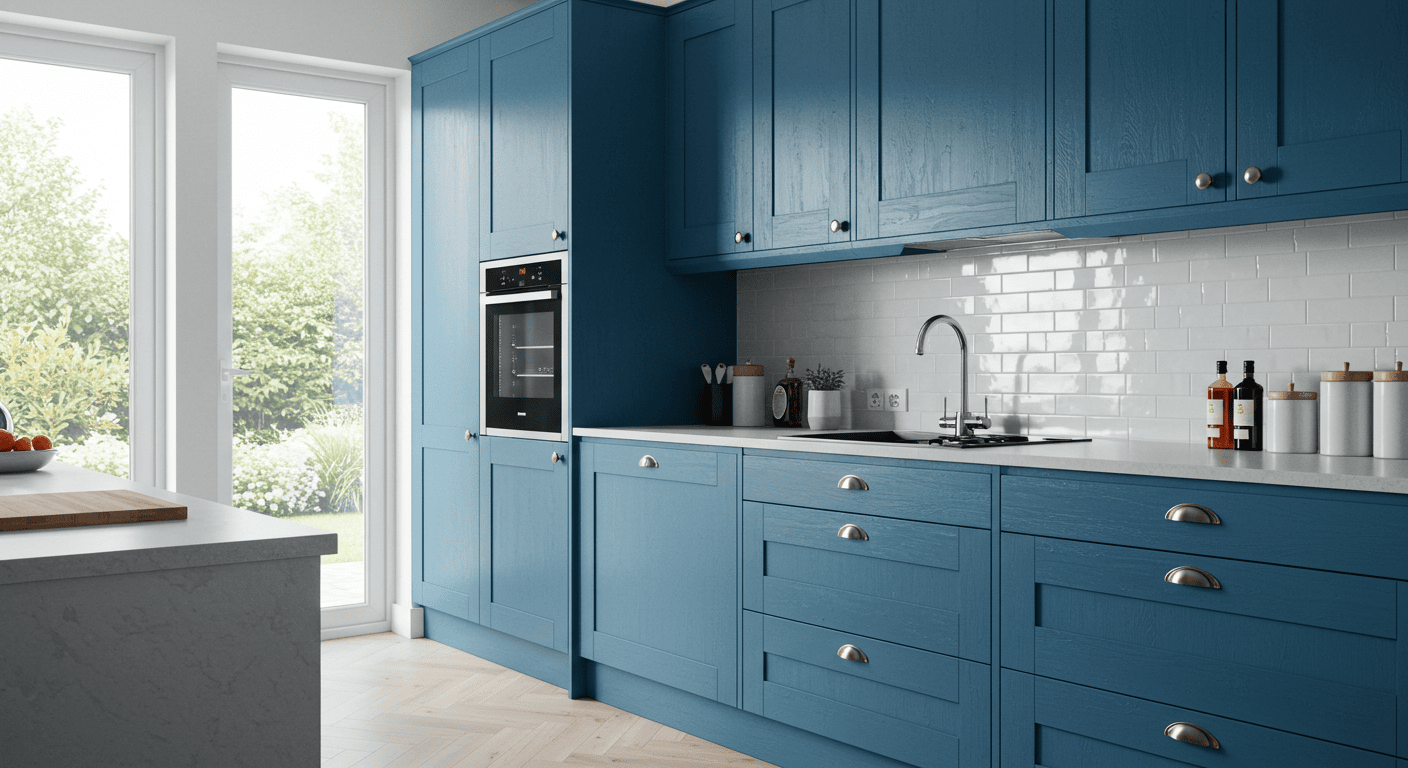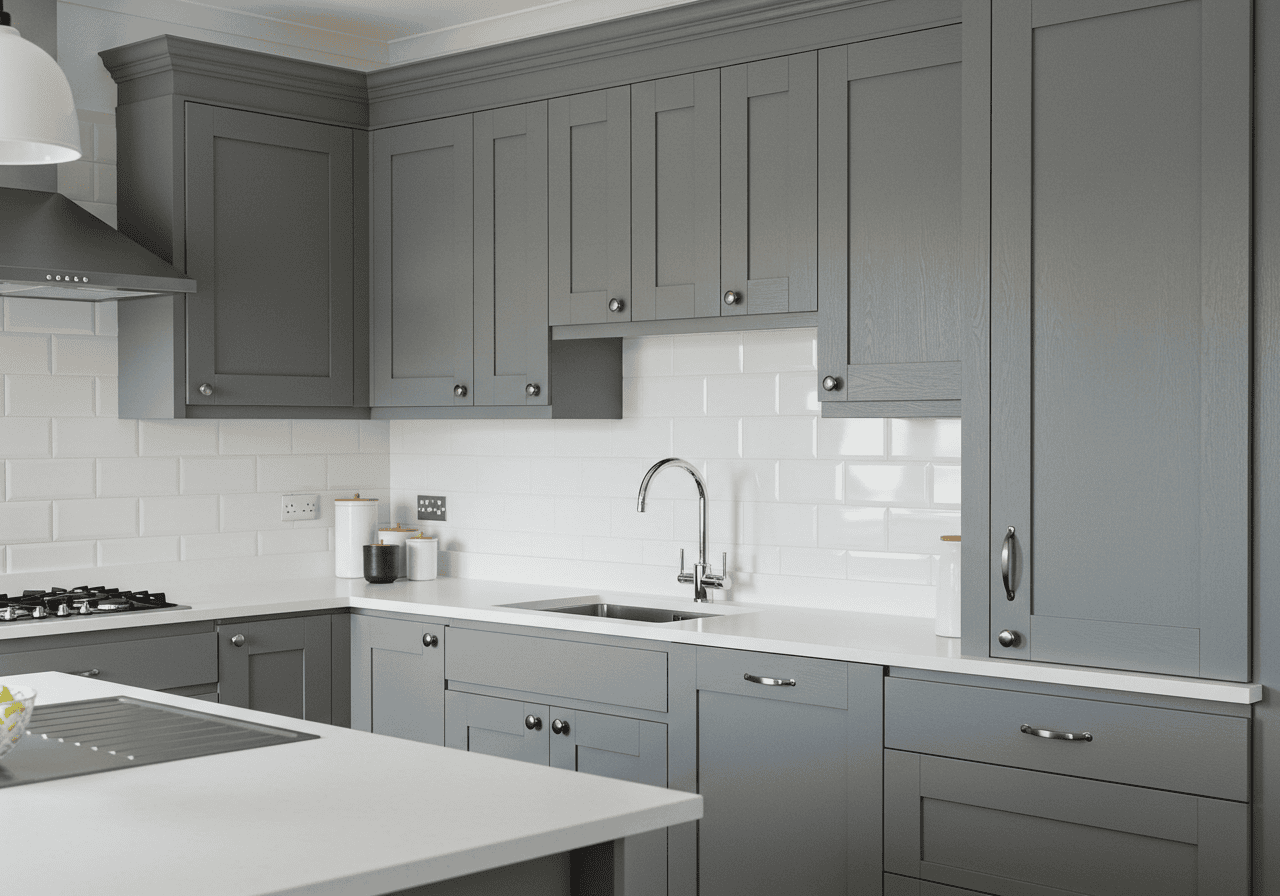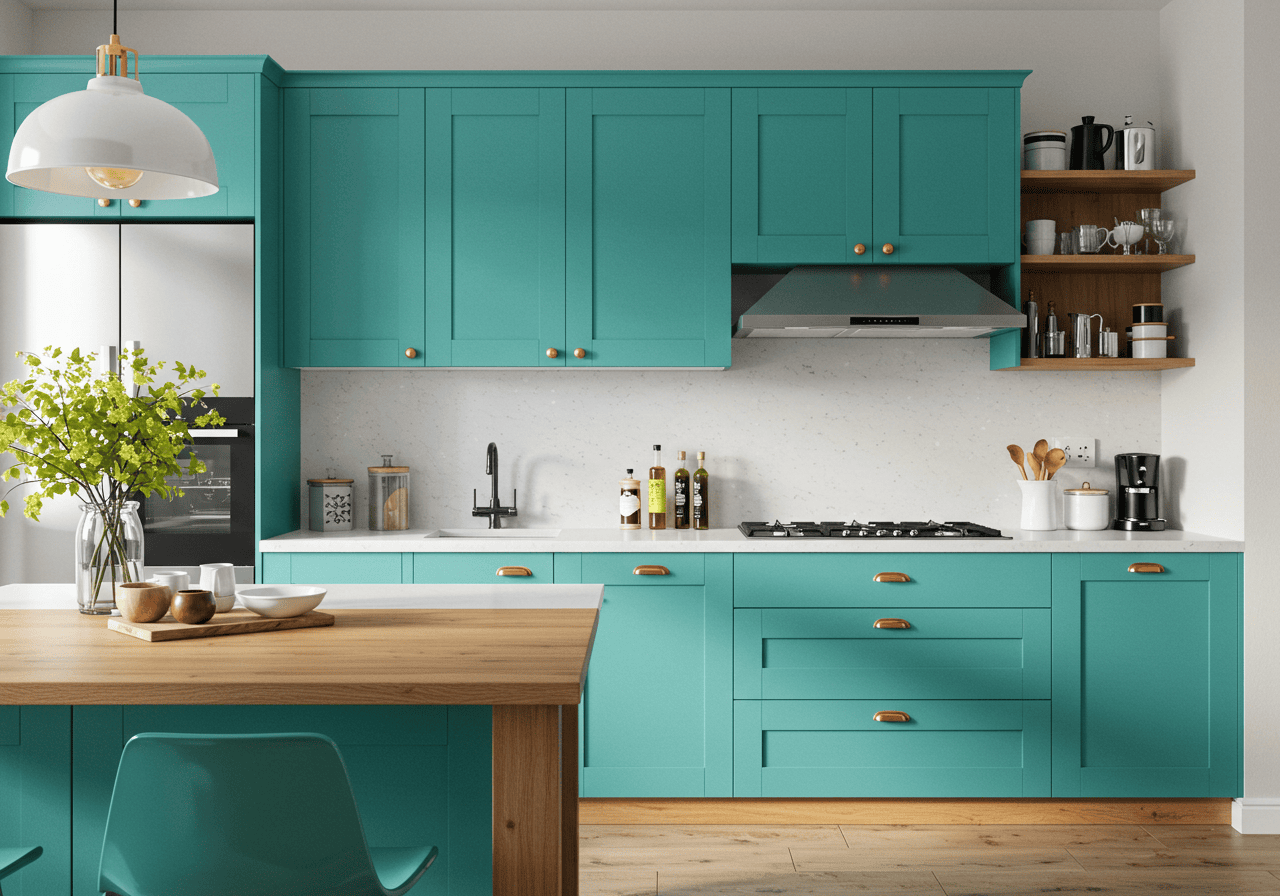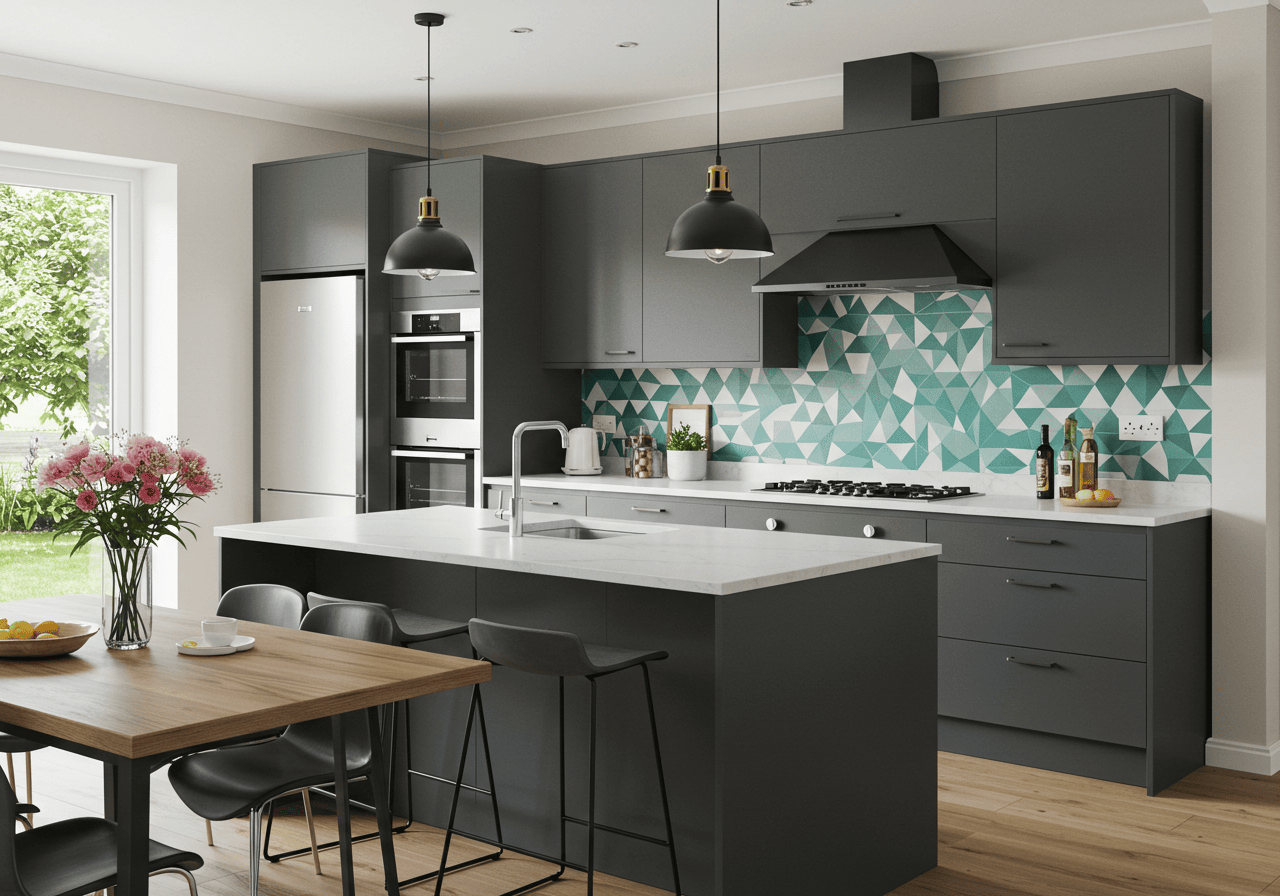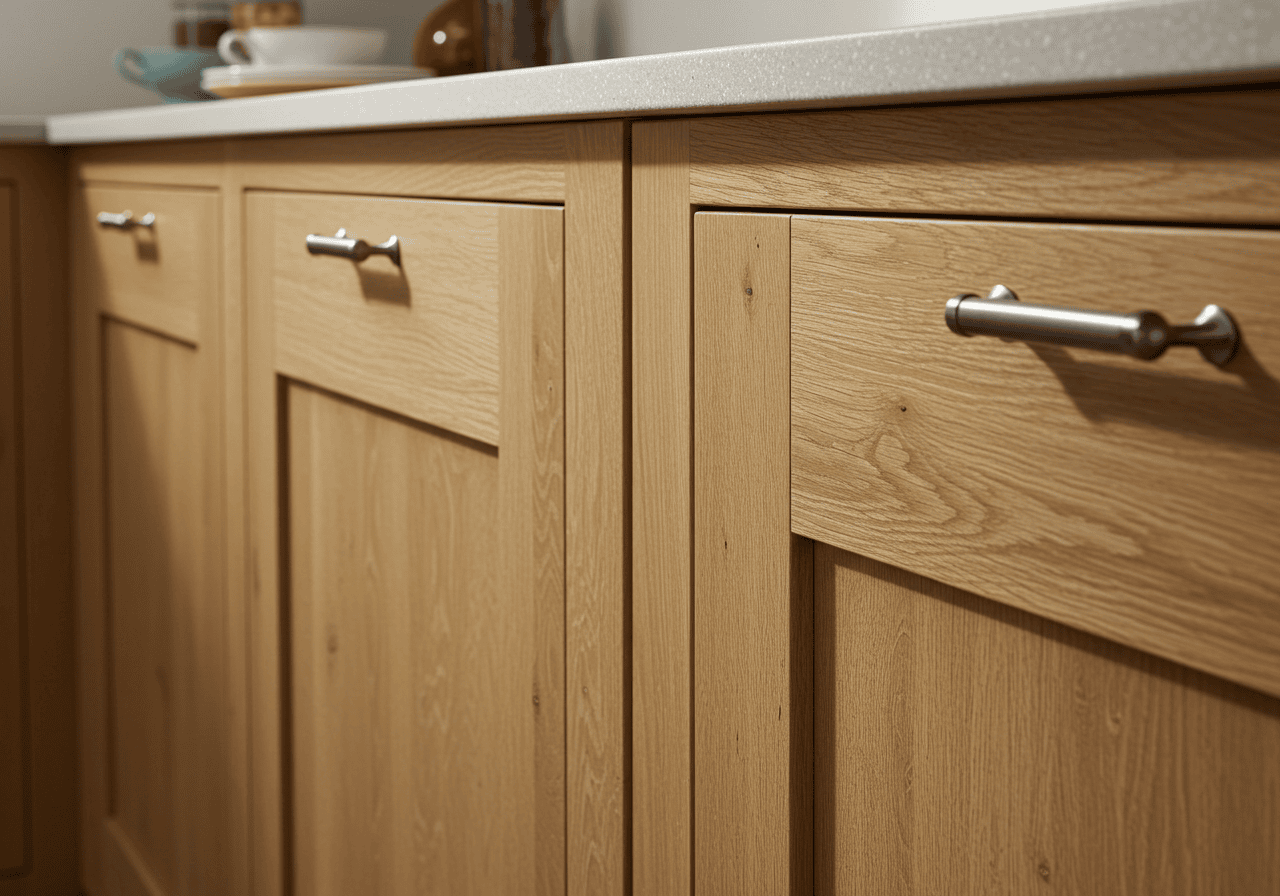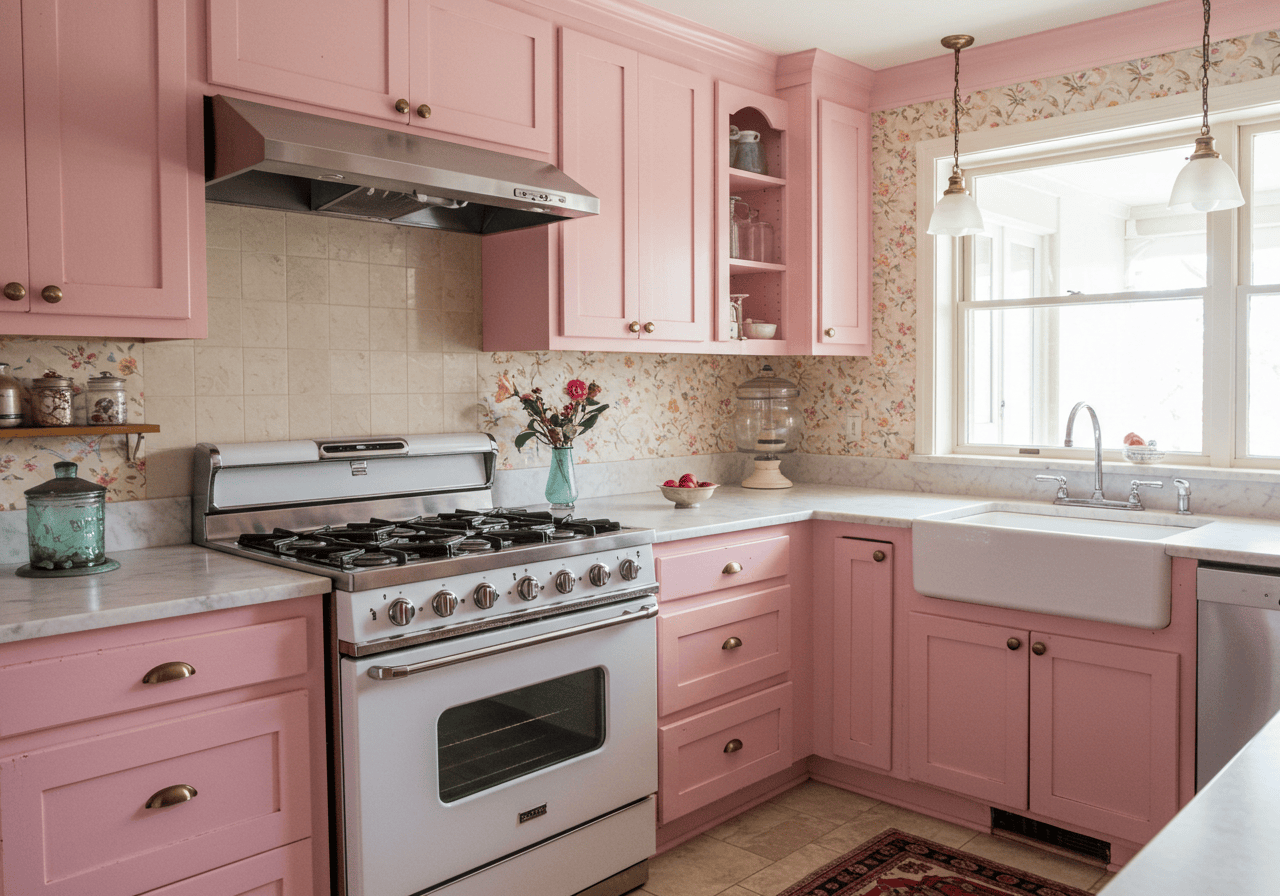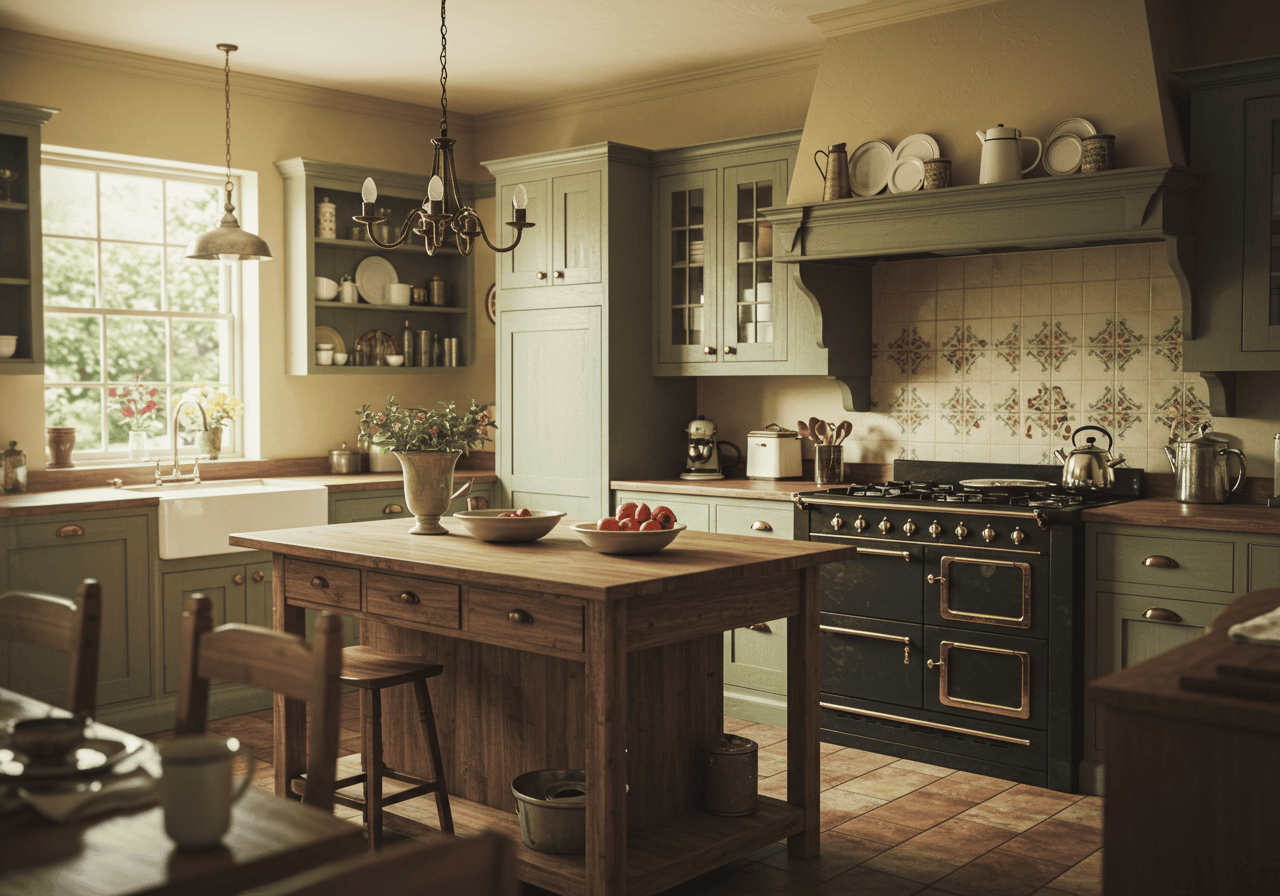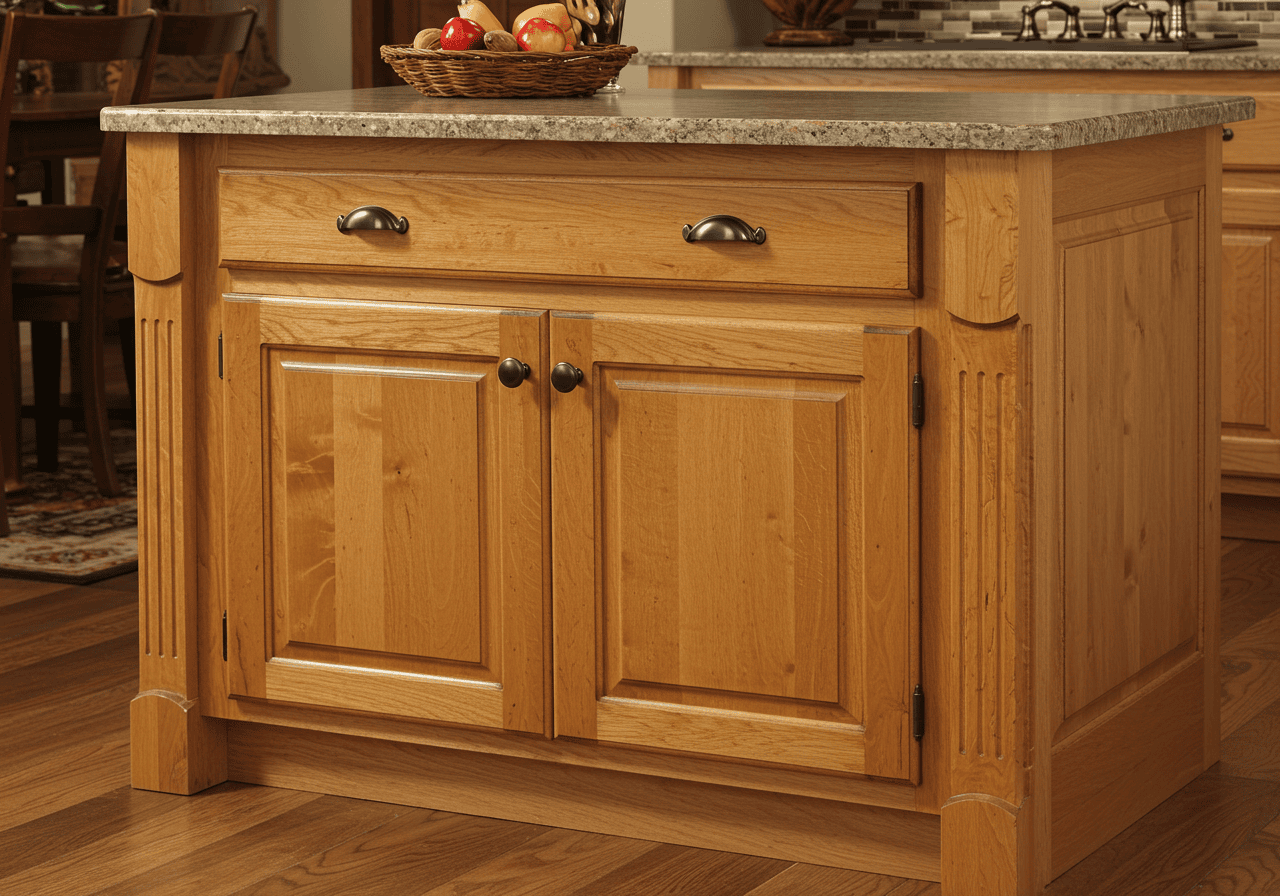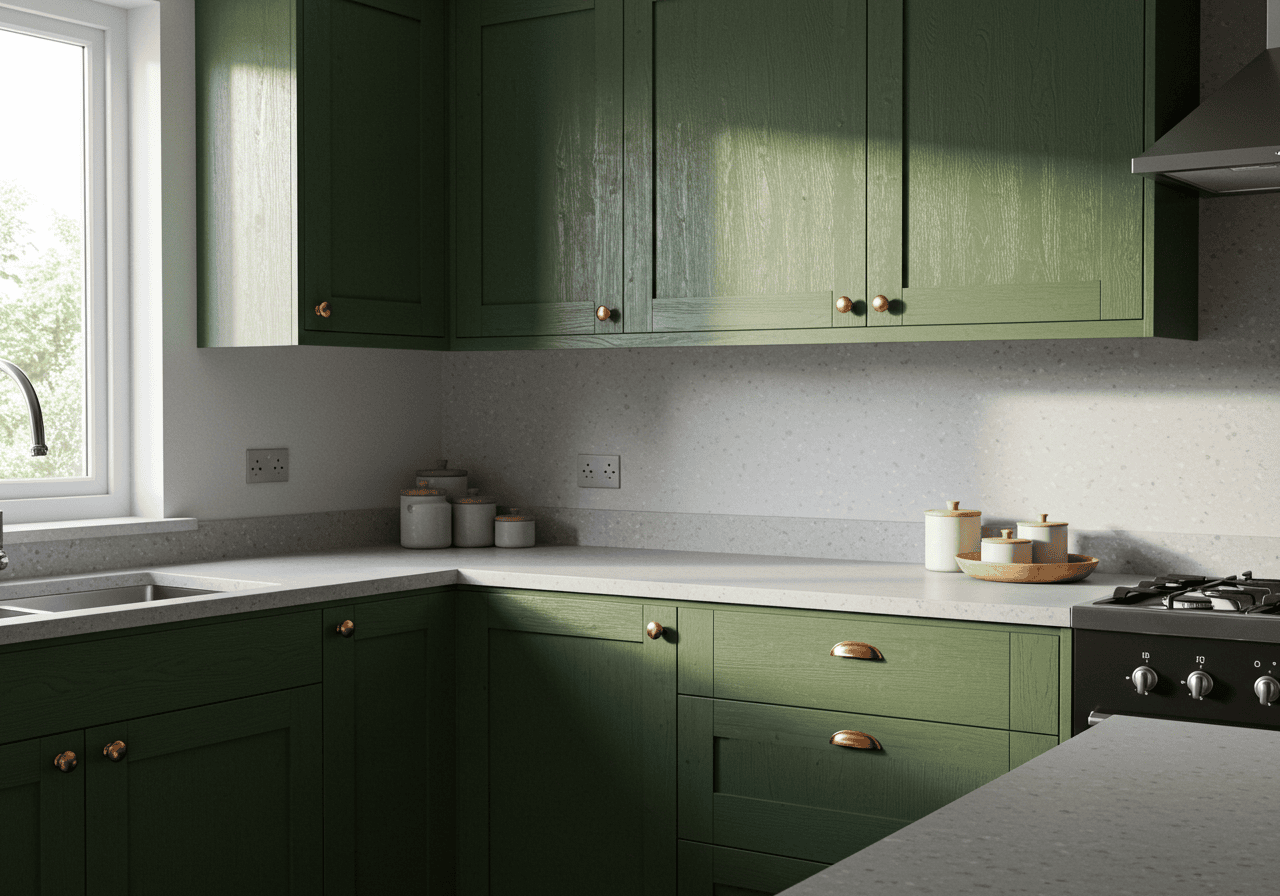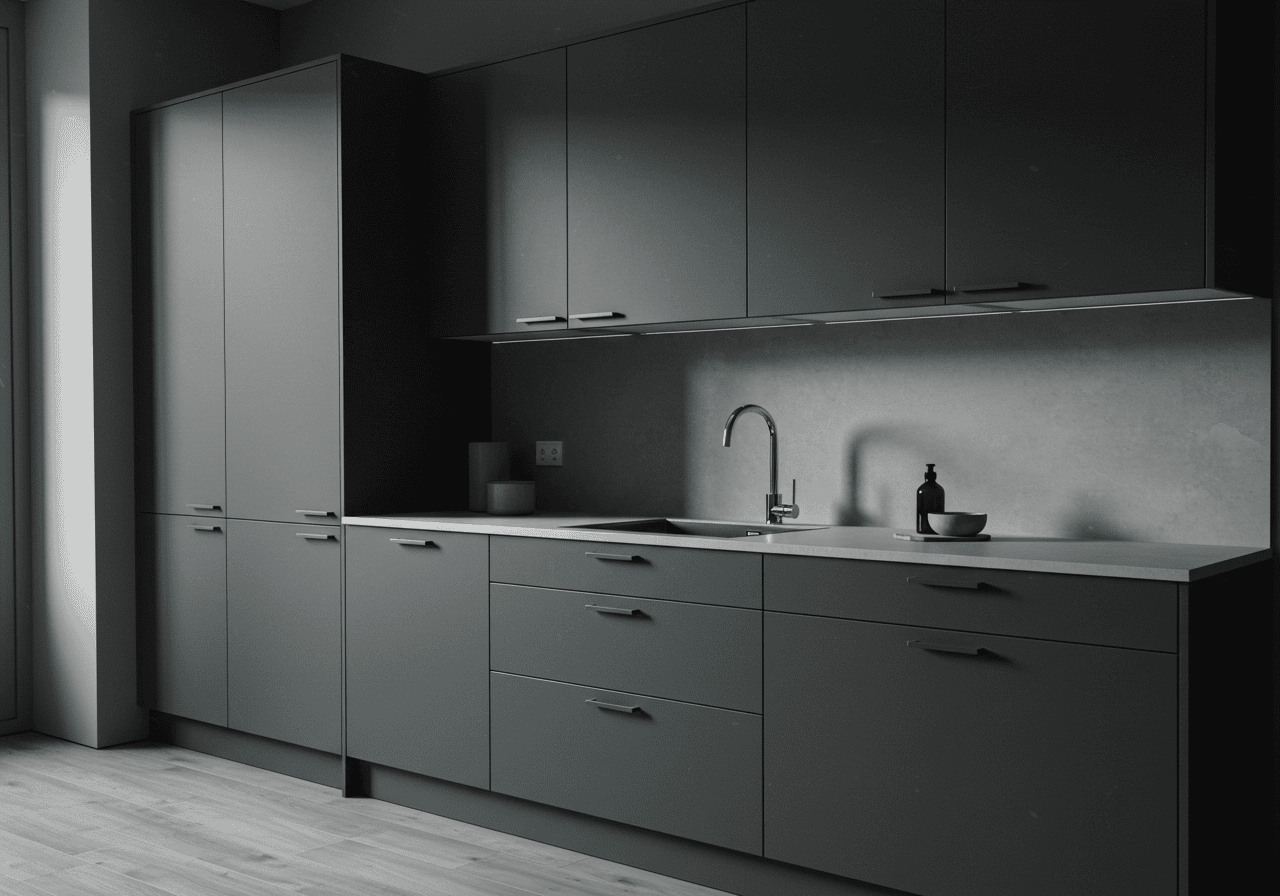Hey there, home decor enthusiasts! Let’s talk kitchens. It’s the heart of the home, the hub of activity, the place where culinary magic (and maybe a little mess) happens. While we often focus on countertops, cabinets, and appliances, there’s one crucial element that literally grounds the entire space: the flooring.
Choosing the right kitchen floor can feel like a huge puzzle. You need something durable enough to withstand spills, foot traffic, and dropped utensils, yet stylish enough to complement your overall design vision. Tough, right? Don’t sweat it! We’ve scoured the trends, consulted the experts, and gathered 21 fantastic kitchen flooring ideas to inspire your next renovation or refresh.
From timeless classics to cutting-edge materials, we’re diving deep into options that blend functionality with flair. So, grab a cuppa, get comfy, and let’s find the perfect foundation for your dream kitchen!
1. Classic Hardwood: Timeless Warmth Underfoot
There’s an undeniable allure to hardwood floors. They bring natural warmth, character, and a touch of elegance that few other materials can match. Whether you prefer light oak, rich walnut, or rustic reclaimed planks, hardwood seamlessly integrates into various kitchen styles, from traditional farmhouses to sleek, modern spaces.
- Why We Love It: Hardwood adds significant resale value, feels lovely underfoot, and can be sanded and refinished multiple times to refresh its look over the decades. Engineered hardwood offers better resistance to moisture fluctuations than solid hardwood, making it a more practical choice for kitchens.
- Keep in Mind: Solid hardwood isn’t best friends with excessive moisture, so spills need prompt attention. It can also scratch or dent, though many feel this adds to its character over time. Protective finishes are key!
- Expert Tip: Consider pairing lighter wood tones with dramatic, dark cabinetry for a stunning contrast. Imagine beautiful blonde maple floors setting off sophisticated black kitchen cabinets – chic and timeless!
2. Luxury Vinyl Tile (LVT): The Chameleon of Kitchen Floors
Don’t let the word “vinyl” fool you – this isn’t your grandma’s linoleum! Modern Luxury Vinyl Tile (LVT) or Luxury Vinyl Plank (LVP) is a game-changer. Thanks to advanced printing technology, it can realistically mimic the look of expensive hardwood, natural stone, or even patterned ceramic tile, often at a fraction of the cost.
- Why We Love It: LVT is a champion of practicality. It’s waterproof, highly durable, scratch-resistant, comfortable and quiet underfoot, and incredibly easy to clean – perfect for busy households with kids or pets. The installation process (often click-lock or glue-down) is also relatively DIY-friendly.
- Keep in Mind: While high-quality LVT is tough, it can be punctured by extremely sharp objects. Quality varies, so opt for reputable brands with thicker wear layers for maximum longevity.
- Style Tip: LVT offers endless design possibilities, making it a versatile player in any overall kitchen decorating ideas. Choose a wood-look plank for warmth without the worry, or a stone-look tile for an upscale feel minus the coldness of real stone.
3. Porcelain Tile: The Indestructible Style Statement
When it comes to sheer durability and water resistance, porcelain tile reigns supreme. Made from finer, denser clay fired at higher temperatures than ceramic, porcelain is incredibly tough, resistant to scratches, stains, and moisture. It’s an ideal choice for high-traffic kitchens that see a lot of action.
- Why We Love It: The design potential is enormous! Porcelain comes in a staggering array of colours, patterns, sizes, and finishes – from glossy subway tiles to large-format slabs that mimic concrete or marble, to intricate mosaic patterns. It’s also super easy to clean and maintain.
- Keep in Mind: Tile can feel hard and cold underfoot (though area rugs or underfloor heating can mitigate this). Grout lines require sealing and regular cleaning to prevent staining. Dropped glassware will almost certainly break. Installation is typically more labour-intensive and costly.
- Design Insight: Large-format tiles (think 12×24 inches or bigger) can make a smaller kitchen feel more spacious by minimizing grout lines. Consider a sophisticated neutral tile to complement colourful cabinetry, like serene blue kitchen cabinets.
4. Ceramic Tile: The Versatile & Budget-Friendly Classic
Similar to porcelain but generally more budget-friendly, ceramic tile offers a fantastic balance of durability, water resistance, and design versatility. It’s been a kitchen staple for decades for good reason! While not quite as dense or impervious as porcelain, modern ceramic tile is still a tough cookie, standing up well to everyday kitchen life.
- Why We Love It: The sheer variety is astounding! From classic subway tiles and squares to intricate encaustic-look patterns and wood-look planks, ceramic tile lets you unleash your creativity. It’s easy to clean and available at various price points.
- Keep in Mind: Like porcelain, it can be hard/cold underfoot, and grout needs maintenance. It’s slightly more prone to chipping than porcelain if something heavy is dropped. Professional installation is recommended for best results.
- Styling Idea: Patterned ceramic tiles can create a stunning focal point, especially in an otherwise neutral kitchen. Imagine a bold black-and-white geometric pattern paired with sleek gray kitchen cabinets for a look that’s both sophisticated and playful.
5. Natural Stone: Unparalleled Luxury & Organic Beauty
For a truly luxurious and unique kitchen floor, nothing beats natural stone. Options like travertine, slate, marble, and granite each bring their own distinct colours, veining, and textures, ensuring no two floors are exactly alike. Stone adds an earthy elegance and a sense of permanence to the space.
- Why We Love It: The inherent beauty and variation are unmatched. Stone floors are incredibly durable (when properly sealed) and add significant long-term value to your home. They feel cool underfoot, which can be pleasant in warmer climates.
- Keep in Mind: Natural stone is porous and requires regular sealing to prevent staining and water damage (frequency depends on the stone type). It’s one of the more expensive flooring options, both for materials and installation. Stone can also be hard, cold, and slippery when wet. Marble, while gorgeous, is softer and more prone to etching and staining.
- Perfect Pairing: The rugged, natural texture of slate or travertine is a perfect match for a cozy, character-filled rustic kitchen, enhancing the connection to natural materials.
6. Polished Concrete: Industrial Chic Meets Modern Durability
Embrace the raw beauty of polished concrete for an edgy, industrial, or ultra-modern vibe. Once relegated to basements and garages, concrete has stepped into the spotlight as a surprisingly chic and highly practical kitchen flooring choice. It can be stained, polished, or even stamped to achieve various looks.
- Why We Love It: It’s incredibly durable, seamless (no grout lines!), easy to clean, and relatively low-maintenance once sealed. Concrete works brilliantly with radiant floor heating for added comfort. Its minimalist aesthetic provides a clean canvas for other design elements.
- Keep in Mind: Concrete is extremely hard, making dropped items likely to break and potentially uncomfortable for long periods of standing (use mats!). It needs proper sealing to resist stains and moisture. Cracks can occasionally develop over time, though some see this as part of its industrial charm. Installation requires professionals.
- Design Synergy: Polished concrete floors provide the perfect minimalist foundation for cutting-edge modern kitchen ideas, allowing sleek cabinetry, statement lighting, and high-tech appliances to shine.
7. Bamboo Flooring: The Sustainable & Speedy Grower
Looking for an eco-friendly alternative to hardwood? Bamboo flooring might be your answer. Technically a grass, bamboo grows much faster than trees, making it a highly renewable resource. It offers a similar look and feel to hardwood, often with unique grain patterns.
- Why We Love It: Sustainability is a major plus. Bamboo is quite durable (strand-woven bamboo is particularly tough) and offers a clean, contemporary aesthetic. It’s available in various shades and styles (horizontal, vertical, strand-woven).
- Keep in Mind: Quality varies significantly; cheaper bamboo can be prone to scratching and denting. Like hardwood, it can be susceptible to water damage, so spills should be wiped up quickly. Acclimation before installation is crucial to prevent warping.
- Colour Coordination: The natural, often lighter tones of bamboo pair beautifully with a wide range of cabinet colours. Explore different kitchen cabinet color ideas – from crisp whites to deep greens or blues – to see how they complement bamboo’s organic feel.
8. Cork Flooring: Soft, Silent & Sustainable Style
Cork is another fantastic eco-friendly option, harvested from the bark of cork oak trees without harming the tree itself. It’s known for its unique cushioned feel underfoot, making it incredibly comfortable to stand on for long periods – a real bonus for avid cooks!
- Why We Love It: Comfort is key! Cork is naturally insulating (both thermally and acoustically – goodbye echoing footsteps!), antimicrobial, and water-resistant (when properly sealed). It has a distinct, warm texture and comes in various tile and plank formats.
- Keep in Mind: Cork is softer than wood or tile, making it susceptible to dents from heavy dropped objects or scratches from pet claws (though minor marks can sometimes self-heal). It requires sealing every few years to maintain water resistance and durability. Direct sunlight can cause fading.
- Retro Vibes: The warm, natural texture and sustainable credentials of cork make it a fantastic fit for reviving a charming mid-century modern kitchen, complementing teak furniture and atomic-age design elements.
9. Linoleum: The Natural Retro Revival
Hold on, isn’t linoleum outdated? Think again! True linoleum (not vinyl!) is making a comeback, appreciated for its eco-friendly composition (made from natural materials like linseed oil, cork dust, and wood flour) and its potential for vibrant colour and retro charm.
- Why We Love It: It’s sustainable, biodegradable, naturally antimicrobial, water-resistant, and quite durable (often lasting 20-40 years!). Linoleum comes in sheets or tiles and offers rich, through-body colour (meaning scratches are less noticeable).
- Keep in Mind: Requires sealing upon installation and periodic resealing. Can be susceptible to denting from heavy appliances or furniture. Needs specific cleaning products (avoid harsh chemicals). The yellowish tinge (“ambering”) from linseed oil oxidation is normal and usually fades with light exposure.
- Lighting Matters: The appearance of linoleum, especially bolder colours or patterns, can be significantly influenced by your choice of illumination. Ensure your kitchen lighting ideas – from pendants to under-cabinet lights – showcase your linoleum floor in its best light.
10. Rubber Flooring: The Resilient & Comfortable Contender
Often seen in commercial settings like gyms or hospitals, rubber flooring is gaining traction in residential kitchens for its unique combination of resilience, comfort, and safety. It provides excellent cushioning and slip resistance.
- Why We Love It: Supreme comfort and safety – it’s soft underfoot and naturally slip-resistant, even when wet. Rubber is highly durable, water-resistant, and easy to clean. It comes in a wide array of colours and textures (like coin-dot or smooth).
- Keep in Mind: Can be one of the more expensive resilient flooring options. Some types may have an initial rubber odour (which usually dissipates). Grease and certain oils can stain some rubber floors, so choose wisely for kitchen use and clean spills promptly. Quality varies.
- Unexpected Pairing: The modern, slightly industrial feel of smooth rubber flooring can create an interesting and stylish contrast when paired with more traditional elements, such as warm oak kitchen cabinets, blending old and new beautifully.
11. Terrazzo: Playful Patterns with Enduring Strength
Talk about a comeback! Terrazzo, with its composite base speckled with chips of marble, quartz, glass, or granite, has shed its institutional image and emerged as a high-style choice for modern and retro-inspired kitchens. Whether poured in place or installed as tiles, it offers unique patterns and serious durability.
- Why We Love It: It’s incredibly long-lasting and durable. The design possibilities are endless, from subtle speckles to bold, colourful aggregate mixes. Poured terrazzo creates a seamless, grout-free surface that’s easy to clean. Tile options offer easier installation.
- Keep in Mind: Authentic poured terrazzo is a high-end option requiring specialised installation. It can be hard and cold underfoot (like tile or concrete). Terrazzo tiles are more accessible but will have grout lines. Sealing is necessary to prevent staining.
- Style Statement: Terrazzo’s inherent pattern makes a bold statement. Use it as the star of the show, pairing it with minimalist cabinets and countertops to let the floor’s personality shine through. It’s perfect for adding a playful yet sophisticated touch.
12. Epoxy Resin Flooring: Seamless Shine & Custom Cool
Gaining popularity beyond garages and industrial spaces, epoxy resin flooring offers a unique, seamless, and highly durable surface for the modern kitchen. Applied as a liquid coating over a prepared concrete subfloor, it cures into a hard, plastic-like finish that can range from high gloss to matte, and incorporate various colours, metallic pigments, or even decorative flakes.
- Why We Love It: Creates a completely seamless, non-porous surface – incredibly easy to wipe clean and highly resistant to water and stains. It’s exceptionally durable and resistant to chemicals. Offers vast customization potential for a truly unique, high-gloss (or matte) contemporary look.
- Keep in Mind: Professional installation is highly recommended for proper preparation and application. The subfloor must be in good condition. Can be slippery when wet, though anti-skid additives can be incorporated. High-gloss finishes show scratches more readily than matte ones. Potential for UV yellowing over time with some formulations, especially in direct sunlight (choose UV-stable options).
- Design Edge: Metallic epoxy floors, with swirling patterns of pearlescent pigments, create a dramatic, almost three-dimensional effect that makes a stunning statement in minimalist or industrial-chic kitchens.
13. Reclaimed Wood: History and Character Underfoot
For a floor with soul and a story, reclaimed wood is unbeatable. Salvaged from old barns, factories, or warehouses, these planks boast unique weathering, nail holes, saw marks, and colour variations that speak of their past life. It brings instant warmth, character, and rustic charm to any kitchen.
- Why We Love It: It’s incredibly characterful and unique – no two floors are alike. It’s an eco-friendly choice, giving old materials a beautiful new purpose. Often sourced from old-growth timber, reclaimed wood can be exceptionally hard and durable.
- Keep in Mind: Sourcing quality reclaimed wood can be challenging and expensive. The surface can be uneven, and it requires careful finishing and sealing. Like new hardwood, it’s susceptible to water damage if spills aren’t cleaned promptly. Installation requires expertise.
- Rustic Meets Refined: Pair the rugged beauty of reclaimed wood floors with sleeker elements like stainless steel appliances or quartz countertops for a compelling blend of rustic charm and modern sophistication.
14. Brick Pavers: Rustic Durability with European Flair
Bring a touch of old-world charm or industrial grit to your kitchen with brick paver flooring. Whether using genuine thin brick veneers or clay pavers designed for interiors, this option offers incredible durability and a unique textured look reminiscent of European courtyards or rustic farmhouses.
- Why We Love It: Extremely durable and long-lasting. The textured surface offers good slip resistance. It hides dirt well and develops a beautiful patina over time. Offers a very distinct, warm, and earthy aesthetic.
- Keep in Mind: Brick is porous and needs thorough sealing to prevent stains and moisture absorption, especially in a kitchen environment. The uneven surface can be harder to clean than smooth flooring, and grout lines are substantial. It’s also very hard underfoot.
- Installation Pattern: Play with different installation patterns like herringbone or basketweave to add extra visual interest beyond the standard running bond. A herringbone brick floor can elevate the entire kitchen design.
15. Slate Tile: Natural Texture and Moody Hues
Slate tile offers a unique combination of natural beauty, durability, and texture. Known for its characteristic cleft surface and rich, often darker colour variations (including grays, blacks, greens, and purples), slate adds an earthy sophistication and grounding presence to the kitchen.
- Why We Love It: It’s naturally slip-resistant due to its textured surface. Slate is very durable and resistant to scratches and dents. The colour variations within and between tiles create a beautiful, natural mosaic effect.
- Keep in Mind: Slate is a porous natural stone and requires sealing to prevent staining. The uneven surface can make cleaning slightly more challenging. Quality varies – opt for denser, gauged slate (calibrated for uniform thickness) for easier installation and better performance. It can be cold underfoot.
- Modern Rustic Blend: Pair dark gray or black slate floors with light wood cabinets or white countertops for a striking modern rustic or contemporary look. The contrast highlights the natural texture of the stone.
16. Travertine Tile: Warmth and Elegance of Ancient Stone
Evoking images of Roman villas and Tuscan farmhouses, travertine tile brings a warm, classic elegance to the kitchen. This natural limestone, formed near mineral springs, is known for its characteristic pits and troughs (often filled in honed or polished versions) and its creamy beige, tan, and subtle gold tones.
- Why We Love It: Offers a sophisticated, luxurious look that feels both ancient and timeless. Its neutral colour palette works well with many cabinet styles and colours. Honed and filled travertine provides a smoother, easier-to-maintain surface than unfilled versions.
- Keep in Mind: Like other natural stones, travertine is porous and needs sealing to protect against stains and etching, especially from acidic substances. It’s softer than granite or slate, so it can be scratched or chipped. The pits in unfilled travertine can trap dirt.
- Design Tip: Choose honed (matte finish) travertine for better slip resistance and a more contemporary feel, or tumbled travertine for a rustic, aged look. Pair it with dark wood or painted cabinets for a rich contrast.
17. Marble Tile: The Epitome of Classic Luxury
While mentioned under natural stone, marble tile deserves its own spotlight due to its iconic status and specific characteristics. Instantly recognizable by its elegant veining and luminous quality, marble flooring brings unparalleled luxury and a timeless, classical feel to any kitchen. Carrara, Calacatta, and Statuario are popular varieties, each with distinct veining patterns and colourations.
- Why We Love It: Unmatched elegance and high-end aesthetic appeal. Natural variations ensure every floor is unique. Its cool surface feels pleasant underfoot in warm climates. Adds significant perceived value to a home.
- Keep in Mind: Marble is softer and more porous than granite or porcelain. It requires diligent sealing to prevent staining and is prone to etching from acidic substances (like lemon juice, wine, or vinegar) which dulls the surface. It can also scratch and chip more easily than harder materials. Requires careful maintenance and specific pH-neutral cleaners.
- Style Sophistication: Honed marble (matte finish) is often preferred for kitchen floors as it’s less slippery and shows etching less obviously than polished marble. Use large-format tiles to minimize grout lines and maximize the impact of the beautiful veining. It pairs exquisitely with high-end appliances and refined cabinetry.
18. Sheet Vinyl: The Practical & Affordable Powerhouse
Modern sheet vinyl has come a long way, offering improved aesthetics and impressive durability at a very attractive price point. Laid down in a single, seamless sheet (or with very few seams in large kitchens), it’s one of the most water-resistant and easy-to-clean flooring options available.
- Why We Love It: Highly affordable, extremely water-resistant (virtually waterproof when installed correctly), low maintenance, and comfortable underfoot compared to tile or stone. Available in a vast range of designs, mimicking wood, tile, stone, or offering unique graphic patterns.
- Keep in Mind: Can be susceptible to cuts, tears, or dents from sharp objects or heavy furniture. Lower-quality vinyl may look less realistic and wear out faster. Seams (if necessary) can be points of weakness for moisture ingress if not sealed properly.
- Pattern Play: Sheet vinyl is a great medium for experimenting with bold patterns or realistic textures without the commitment or cost of tile or wood. Look for thicker wear layers for better longevity in a busy kitchen.
19. Laminate Flooring: The Budget Wood-Look Workhorse
Laminate flooring offers the look of hardwood (or sometimes stone or tile) without the high cost or maintenance concerns. It’s constructed in layers, with a photographic image layer protected by a tough, clear wear layer, all fused to a core board.
- Why We Love It: Provides a convincing wood look at a fraction of the price. It’s durable, scratch-resistant, and easy to clean day-to-day. The click-lock installation system makes it a popular DIY project.
- Keep in Mind: While the surface is water-resistant, the core board can swell and warp if excessive moisture seeps into the seams – not ideal for areas prone to major spills or leaks. It can’t be refinished like real wood. Some laminates can sound hollow when walked upon. Look for options specifically rated for kitchen use or with enhanced water resistance.
- Choosing Wisely: Opt for high-quality laminate with a thick wear layer, good water resistance features (like waxed edges), and realistic texturing (embossed-in-register) for the most convincing and durable result in a kitchen setting.
20. End-Grain Wood Block Flooring: Industrial Strength with Intricate Beauty
For a floor that blends incredible durability with a uniquely captivating pattern, consider end-grain wood block flooring. Made by slicing logs crosswise (exposing the “end grain” with its growth rings) and arranging these blocks together, this type of flooring was historically used in factories and workshops due to its exceptional resistance to wear and compression. Today, it brings that industrial-strength heritage into the home with stunning visual texture.
- Why We Love It: It’s extraordinarily durable and resistant to dents and impacts – the wood fibers are oriented vertically, making them harder to crush. The pattern created by the exposed growth rings is intricate, organic, and totally unique. Offers a warm, natural feel underfoot with remarkable character. Can often be sanded and refinished multiple times.
- Keep in Mind: Installation is specialised and requires expertise. Like all wood, it needs proper sealing to protect against moisture, especially crucial in a kitchen. The cost can be higher than standard hardwood due to the manufacturing and installation process. Requires careful acclimation before installation.
- Style Statement: End-grain flooring makes a strong visual statement. Its blocky, patterned nature pairs exceptionally well with both rustic industrial styles (think exposed brick, metal accents) and surprisingly sleek, modern designs where its natural texture provides a grounding counterpoint to smooth surfaces.
21. Classic Checkerboard: Timeless Pattern Power
The checkerboard pattern is a design classic that instantly injects personality and a touch of retro or sophisticated flair into a kitchen. While achievable with painted floors or sheet linoleum, creating it with durable tiles – like porcelain, ceramic, LVT, or classic Vinyl Composite Tile (VCT) – offers longevity and easy maintenance for this high-impact look.
- Why We Love It: It’s a timeless pattern that transcends trends, fitting equally well in vintage, modern farmhouse, or even sleek contemporary kitchens depending on the colours and tile size chosen. Offers clear visual structure and can make a space feel dynamic. Customizable through colour combinations (classic black & white, subtle tone-on-tone greys, or even bolder pairings) and tile size/orientation (straight or diagonal).
- Keep in Mind: Requires precise layout and installation for clean lines. The high contrast of traditional black and white can show dirt more readily (though patterned variations might hide it better). The chosen material (porcelain, LVT, VCT) will dictate the overall durability, water resistance, and maintenance needs (refer back to those specific material points).
- Beyond Black & White: Think outside the box! Consider a checkerboard using two different shades of grey LVT for a softer, modern take, or maybe a cream and terracotta porcelain tile for a warmer, more rustic feel. Playing with scale (large vs. small tiles) also dramatically changes the look.
Phew! That’s a whole lot of fabulous flooring inspiration. Choosing the right kitchen floor is all about balancing your aesthetic dreams with the practical demands of your household. Consider your budget, lifestyle, desired maintenance level, and overall kitchen design theme.
We hope this list sparks some brilliant ideas for your own space. Happy decorating!

